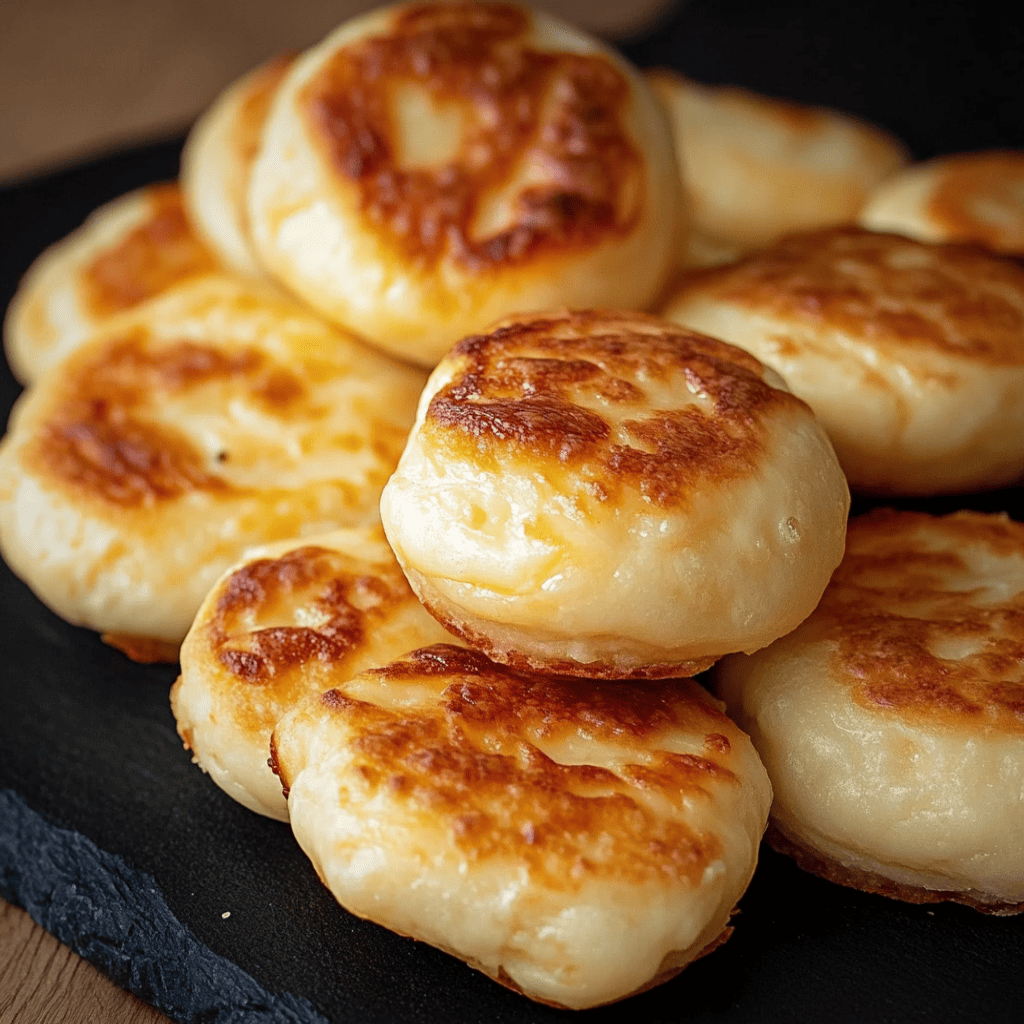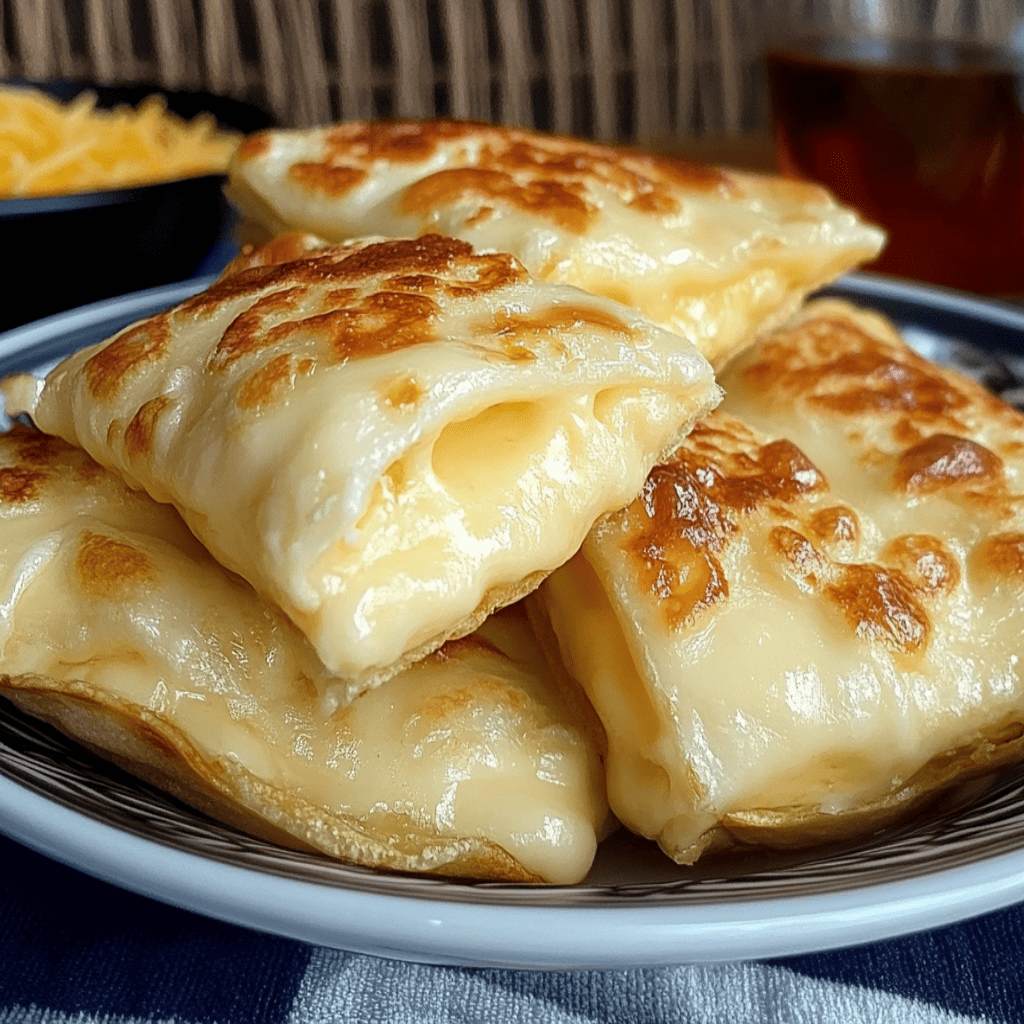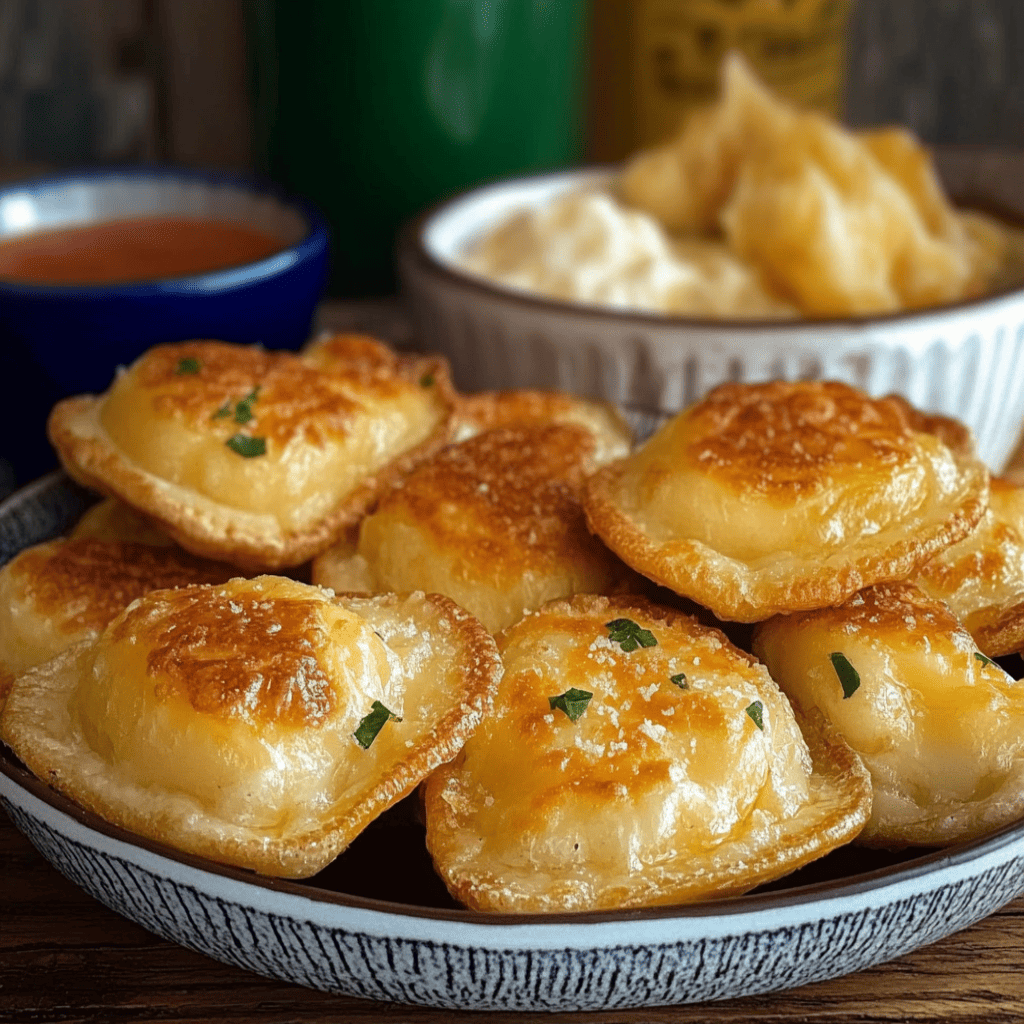Cheese Rolls
Introduction
Cheese rolls are soft and tasty, perfect for breakfast, a snack, or any other snack. They’re quick and easy to prepare, with no need for yeast or long rising times. Thanks to the use of self-rising flour and cheese, these rolls develop an airy texture and intense flavor that will delight cheese lovers.
In this talk, we’ll explore the history of these rolls, their ingredients and preparation steps, as well as some variations and tips to make this recipe a success.

A. History and Origin of Cheese Rolls
Cheese breads have a long tradition in world cuisine. Many cultures have similar variations, such as:
Brazilian pão de queijo, prepared with tapioca flour.
Paraguayan chipa, small cheese loaves made with cassava flour.
French gougères, small savory choux buns with cheese.
Cheese bread rolls, as we prepare them here, are a simplified and quick version inspired by traditional cheese bread. They are particularly popular in Latin America, where cheese is a central ingredient in many savory and baked pastry recipes.
Detailed History of Cheese Rolls
Cheese bread rolls are a delicious bread roll of uncertain origin, but with a strong presence in the cuisine of various Latin American and European countries. They are characterized by their spongy texture and intense cheesy flavor, making them a perfect choice for breakfast, a snack, or as an accompaniment to soups and stews.
Origins and Evolution
Bread is one of humanity’s oldest foods, and combining it with cheese has been a common practice since ancient times. In many cultures, bread and cheese have been a staple food due to the easy availability of its ingredients and their high nutritional value.
Although the exact place where the first cheese rolls originated is not known , there are several similar versions in different parts of the world:
- In South America , the most popular are pão de queijo in Brazil, chipa in Paraguay, and pandebonos in Colombia. These versions use cassava starch or corn flour instead of wheat flour.
- In Europe , there are similar recipes such as French gougères , cheese puffs made with choux pastry, and cheese scones in England, which contain wheat flour and baking powder, similar to cheese rolls.
Over time, the recipe for cheese rolls has been simplified and adapted to the ingredients available in each region. Today, they are made with self-rising flour, grated cheese, cream cheese, and milk, which allows for a tender roll with a deep cheesy flavor without the need for lengthy fermentation processes.
Popularity in Latin America
In countries like Argentina, Uruguay, and Paraguay , cheese bread rolls have become an easy and delicious homemade option, especially because they don’t require yeast or long resting times. They’re popular at family gatherings, snacks, and breakfasts, accompanied by mate, coffee, or tea.
Plus, the ability to customize the recipe with different types of cheese (such as Parmesan, mozzarella, or Gouda) has made it possible for every household to have their own special version.
Modern Influence and Adaptations
Today, cheese rolls have transcended home kitchens and have become part of cafes and bakeries, where they are offered in a variety of forms:
- Filled with more melted cheese for a creamier experience.
- Flavored with herbs such as oregano, rosemary, or thyme to give it a special touch.
- Gluten-free versions , using alternative flours such as rice or almond flour.
Furthermore, with the influence of social media and globalized gastronomy, the recipe has acquired new variations, such as the addition of spices, seeds, and different types of cheeses to intensify the flavor.
Cheese rolls are an example of how combining basic ingredients can create a simple yet delicious recipe. Their history is a reflection of culinary creativity and the evolution of home baking. Quick and versatile to prepare, these small loaves continue to win over palates around the world and remain an ideal choice for any occasion.

B. Ingredients of Cheese Rolls
To make these delicious cheese rolls we will need:
Basic ingredients:
1 cup self-rising flour (already contains a leavening agent, which eliminates the need for yeast).
3 tablespoons of sunflower oil (provides softness and light texture).
3 tablespoons of cream cheese (for a creamier texture and mild flavor).
100 ml of milk (allows for a smooth and homogeneous dough).
100g grated or shredded cheese (can be Parmesan, Cheddar or a cheese blend).
C. Step-by-step preparation
- Dough Preparation: Sift the self-rising flour into a large bowl to prevent lumps and achieve a uniform texture. Add the sunflower oil and cream cheese to the bowl, then mix gently with a spatula or your hands. Gradually pour in the milk, while mixing, until you have a soft, slightly sticky dough. Add the grated cheese, making sure to distribute it throughout the dough for a uniform flavor.
- Shaping the Rolls Preheat the oven to 180°C (350°F) and line a baking sheet with baking paper. With lightly greased or floured hands, form the dough into balls approximately 3 to 4 cm in diameter. Place the balls on the baking sheet, leaving a little space between them, as they will expand slightly during baking.
- Bake the cheese rolls for 15 to 20 minutes, until they turn a nice golden brown. Check that they’re cooked by piercing a roll with a toothpick; it should come out clean. Remove from the oven and let cool before serving.
D. Variations and tips
- Recipe Variations With other cheeses: Substitute the grated cheese for Gruyère, Emmental, or even Roquefort for a more intense flavor. Gluten-free: Use rice flour or a gluten-free flour blend. Lighter version: Replace the oil with natural yogurt or almond milk for a softer texture. Flavored: Add fresh herbs (parsley, chives, oregano) or a pinch of paprika for a spicy kick.
- Tips for Making Cheese Rolls a Success: Don’t overknead the dough, as this can make the rolls too dense. Use melted cheese for a more chewy interior. Let the dough rest for 10 minutes before shaping them to make them more manageable.
Questions about Cheese Rolls
History and Origin
- What is the exact origin of cheese rolls and in which countries are they most popular?
- How do cheese bread rolls differ from other cheese breads like pão de queijo or chipa paraguaya?
- What influence has European baking had on the evolution of this recipe in Latin America?
Ingredients and Techniques
- Why is self-rising flour used instead of yeast in this recipe?
- What types of cheese can be used to make the tastiest cheese rolls?
- Can sunflower oil be substituted with another type of fat? How does this affect the texture?
- What is the role of cream cheese in the recipe and can it be replaced with another ingredient?
Preparation and Variations
- How can you make cheese rolls fluffier and more airy?
- What variations are there for people with gluten or lactose intolerance?
- Can you make cheese rolls without an oven? What alternative techniques can you use?
- How can cheese rolls be preserved so they don’t lose their freshness?
Culture and Tradition
- At what events or festivities are cheese rolls most common in Latin America?
- How have social media influenced the popularity of this homemade recipe?
- What is the best way to accompany cheese rolls in different cultures?
Additional Information about Cheese Rolls
Recipe Variations
- Gluten-free version: Rice flour or a blend of gluten-free flours can be used.
- Lactose-free version: Dairy products can be substituted with plant-based versions, such as vegan cheese and almond or oat milk.
- Healthier version: You can replace the oil with mashed avocado or Greek yogurt to reduce saturated fat.
- Stuffed rolls: You can add pieces of cheese to the center before baking for a creamier interior.
Tips for a Better Result
- Do not over-knead the dough to prevent the rolls from becoming tough.
- Use a good quality cheese to intensify the flavor.
- Let the dough rest for a few minutes before forming the balls so that the ingredients blend better.
- Bake at medium-high temperature (180°C – 200°C) to achieve a golden exterior and a soft interior.
Curiosities about Cheese Rolls
- In Brazil, pão de queijo is so popular that there are franchises specializing in its sale.
- In Paraguay, chipa is part of the traditional breakfast, especially during Holy Week.
- In Argentina and Uruguay, cheese rolls are often served with mate or coffee at family gatherings.
- There are versions of cheese rolls with chia, sesame, or sunflower seeds for a more nutritious touch.

E. Conclusion
Cheese rolls are an easy, quick, and delicious recipe that’s perfect for any occasion. Their combination of softness and cheesy flavor makes them irresistible for breakfast, a snack, or as a side dish for a meal. Thanks to their simplicity, they can be customized to suit individual tastes and preferences, making them a great option for lovers of homemade baking.
Whether you enjoy them alone, with butter, jam, or even ham, these cheese rolls are always a hit. Try them and enjoy them fresh from the oven, with their slightly crispy exterior and melted cheese center.

